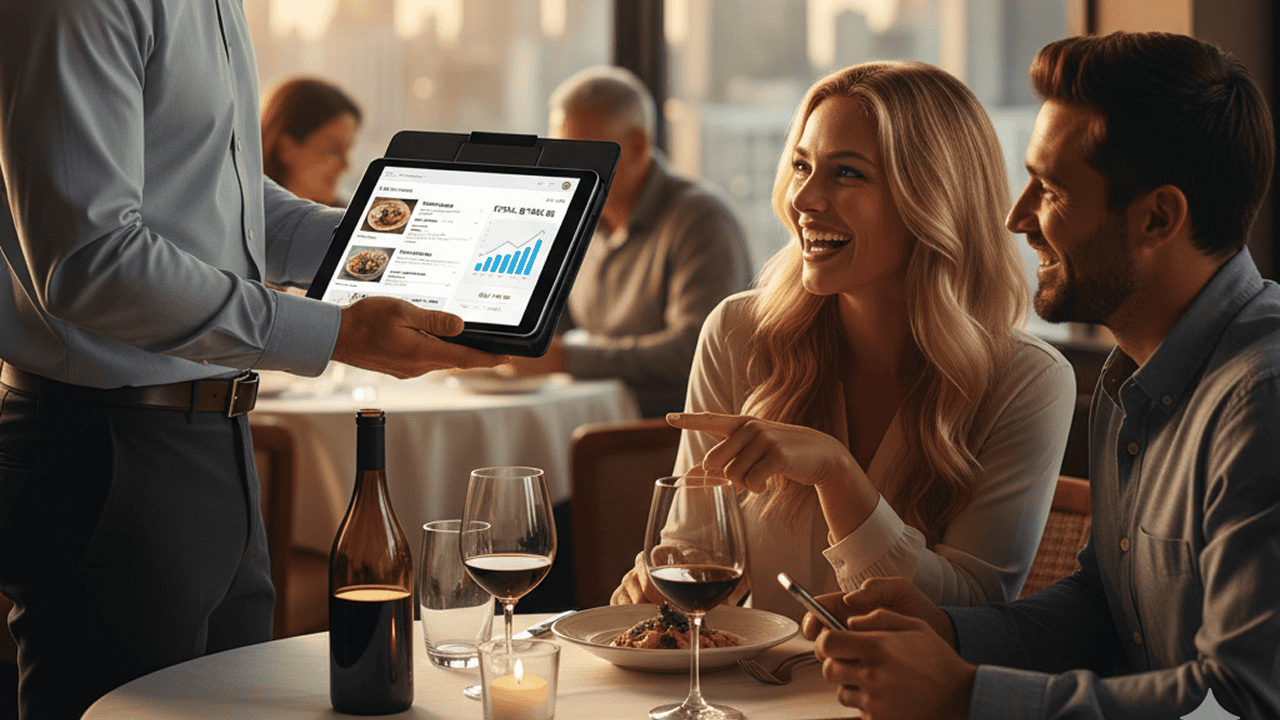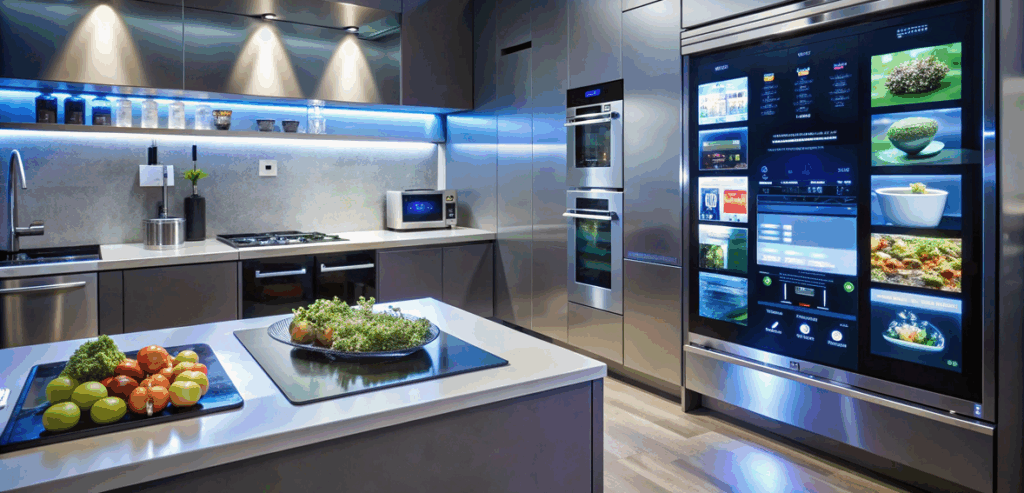
By Geraldine Burns November 10, 2025
Dining has always been about the experience—great food, good company, and smooth service. Yet, in today’s digital-first world, restaurant point of sale technology defines how quickly and efficiently that experience unfolds. Guests expect speed without sacrificing attention, and owners seek systems that deliver more orders in less time. That’s where modern tableside ordering enters, merging hospitality with technology to create a seamless workflow from order to payment. When implemented through an integrated restaurant POS system, it transforms service flow, increases table turnover, and lifts check sizes, redefining how restaurants operate in real time.
The concept is simple but powerful. With handheld devices and a fully connected point of sale, servers can take orders right at the table, send them instantly to the kitchen, and even process payments without leaving the guest’s side. This eliminates the friction between order taking and order execution, reducing wait times while encouraging upsells. A system like Bread Point of Sale exemplifies this shift by connecting the POS for restaurants, kitchen displays, and payments in a single cloud-based platform. The result is faster service, happier guests, and better revenue outcomes for every type of dining establishment.
Redefining Tableside Ordering

At its core, tableside ordering bridges the gap between service and satisfaction. Traditional systems often rely on handwritten notes or delayed order entry, creating room for error and inefficiency. A handheld restaurant POS system eliminates these pain points. Orders are entered once, synced instantly, and reflected across the kitchen and front desk. This single action triggers a chain of speed and accuracy—dishes reach guests faster, and staff stay focused on enhancing the dining experience instead of chasing tickets or re-checking details.
For restaurants, this means more than operational efficiency—it’s a direct impact on profitability. The ability to suggest add-ons, drinks, or desserts right from the restaurant point of sale interface encourages higher check averages. Servers can view past orders, track preferences, and offer personalized upsells, turning routine interactions into revenue opportunities. The ease of integrated restaurant payments also matters. Guests can split bills, tip, and pay securely at the table, closing transactions without waiting for a card terminal. It’s not just faster—it’s a smarter and more intuitive way to serve.
How Speed Impacts Check Size
The connection between speed and spending is undeniable. Guests who aren’t left waiting are more likely to order another drink, dessert, or side. A fast and responsive POS for restaurants keeps momentum alive throughout the meal. Each second saved through instant order transmission or quick payment handling translates into more time spent engaging with customers. That human connection often leads to higher satisfaction and bigger tips for servers, while management benefits from increased throughput.
An integrated point of sale like Bread’s system captures this balance beautifully. It merges guest experience data with transaction history, showing exactly when and how to prompt add-ons. A well-designed handheld restaurant POS system becomes a quiet partner in upselling, gently nudging staff with on-screen suggestions and reminders. The seamless link between order entry and kitchen response ensures that every dish reaches the table fresh and on time, reinforcing a positive feedback loop that encourages return visits and better reviews.
Streamlining Front-of-House Operations
Modern dining demands synchronization. The host stand, servers, and kitchen must operate like a single organism. When powered by an integrated restaurant POS system, each touchpoint communicates effortlessly. Orders from handheld devices appear instantly on kitchen displays. Payment data syncs automatically with reporting dashboards. Modifiers, substitutions, and special requests flow smoothly without verbal relays or paper tickets.
This real-time communication minimizes the friction that often causes errors or delays. It also makes onboarding easier. Staff can navigate intuitive restaurant point of sale interfaces without extensive training. Managers can track performance and sales from any device, ensuring visibility across every table and shift. The faster servers move between tables, the more orders they can take, and the more consistent the service becomes. Such connectivity turns ordinary operations into orchestrated precision.
Kitchen Display System: The Unsung Hero

Behind every fast table service is an efficient kitchen display system (KDS). Acting as the digital bridge between the dining floor and the back of house, the KDS ensures no order is lost, missed, or misunderstood. Instead of juggling paper tickets, kitchen staff receive digital orders instantly from the restaurant POS system, complete with modifiers and time stamps. The screen prioritizes and color-codes tasks, keeping chefs aligned with front-of-house pace.
This synchronization between the POS for restaurants and the kitchen removes guesswork. Chefs can see exactly when orders were placed, which items are in progress, and when to prepare sides or desserts. It helps maintain quality while boosting output. For high-volume restaurants, this translates to reduced waste, fewer re-fires, and faster turnaround. In the end, the kitchen display system isn’t just a screen—it’s the heartbeat that keeps the restaurant moving in rhythm.
Payments Without Pause
When it’s time to settle the bill, speed again becomes the deciding factor. No diner enjoys waiting for a check. With integrated restaurant payments, guests can pay instantly at the table. Whether it’s a contactless tap, mobile wallet, or chip card, the restaurant point of sale system handles it securely. Servers can close out transactions in seconds, minimizing friction at the end of the meal.
This convenience has a psychological effect too. A quick and seamless payment leaves a lasting impression, shaping how guests perceive their overall experience. It also frees tables faster for new customers. From a business standpoint, embedded POS for restaurants with payment processing reduces reconciliation errors and ensures PCI compliance, offering peace of mind for both guests and owners.
The Role of Data and Analytics

Data is the invisible driver of growth in the restaurant world. A connected restaurant POS system gathers real-time insights into what sells, when peak hours hit, and how staff perform. These insights translate directly into smarter decisions—from menu adjustments to staffing schedules. A powerful point of sale platform doesn’t just process transactions; it tells the story of every shift and every customer interaction.
With analytics integrated into restaurant point of sale dashboards, managers can spot trends and test promotions. They can identify high-margin dishes and suggest them dynamically during service. This capability transforms data into action, helping lift average check sizes while keeping costs in control. Over time, it allows owners to refine their menu strategy, optimize inventory, and anticipate customer demand with accuracy.
Online and QR Ordering Integration
Modern diners expect flexibility. They may scan a QR code to browse menus, place orders online, or add another round of drinks—all through their phones. A truly complete online ordering POS bridges in-person and digital channels without friction. Whether it’s a guest scanning from the table or ordering ahead, all transactions flow through one point of sale.
This consistency simplifies operations. Servers can track all orders from the same interface, while the kitchen manages both dine-in and online tickets from the same kitchen display system. It creates a unified flow where data, payments, and fulfillment coexist effortlessly. The benefit extends to customers who enjoy control and transparency while dining, reinforcing satisfaction and repeat business.
Why Integration Matters More Than Ever
Running multiple systems for orders, payments, and delivery may seem manageable at first, but fragmentation creates inefficiency. Integrated restaurant point of sale solutions bring all those moving parts together. Instead of reconciling data from separate tools, everything—from tableside transactions to online orders—flows through a single POS for restaurants.
The benefits ripple across departments. Accountants gain cleaner reporting. Managers get real-time visibility. Servers spend less time navigating screens and more time engaging guests. This cohesion not only simplifies workflows but also ensures reliability. With one system handling every step—from seating to sending—the restaurant builds a foundation for consistent service and scalable growth.
Mobility and the Modern Server
The handheld restaurant POS system has become an essential tool for today’s staff. Lightweight, intuitive, and fast, it gives servers freedom to move. No longer tethered to a terminal, they can take orders, send them, and close checks on the spot. This mobility directly translates into efficiency and guest engagement.
Servers equipped with such tools often appear more confident and attentive. They can address changes immediately, update orders in real time, and process restaurant payments with ease. This not only reduces order errors but also builds trust. Guests appreciate immediacy, and staff appreciate the simplicity. For restaurants, that means higher productivity, smoother shifts, and better morale—a rare balance achieved through technology that empowers, not complicates.
The Customer Experience Revolution
Tableside ordering is more than a trend; it’s a transformation of guest interaction. When powered by an intelligent restaurant point of sale, every touchpoint becomes an opportunity for personalization. Guests can view digital menus, see modifiers instantly applied, and track their order progress. The consistency and transparency this creates redefine hospitality for the digital age.
An integrated POS for restaurants enables seamless transitions from dine-in to delivery, loyalty tracking, and feedback collection. It creates a feedback loop where every meal improves the next. With integrated payments and a responsive kitchen display system, guests experience fewer delays and greater satisfaction. Ultimately, this elevates both perception and profit, proving that speed and service quality can coexist beautifully.
Scalability Across Restaurant Formats
Whether it’s a single café or a large franchise, scalability is a vital consideration. Cloud-based restaurant POS systems like Bread’s make expansion easier. Each new location can be added without overhauling hardware or retraining teams extensively. Centralized control ensures that menu updates, pricing, and promotions sync instantly across units.
This consistency is a major advantage for multi-unit operations. It allows data sharing, unified loyalty programs, and consistent customer experiences. A single integrated point of sale eliminates fragmentation, helping brands maintain their identity while adapting locally. The ability to scale without complexity makes these systems future-proof investments in a rapidly changing industry.
The Financial and Operational Payoff
Restaurants that adopt tableside ordering often see results quickly—shorter table times, fewer order mistakes, and improved staff efficiency. When powered by integrated restaurant payments, reconciliation becomes effortless, cash flow improves, and accounting is simplified. These savings go hand-in-hand with higher average tickets and better guest retention.
By combining restaurant point of sale data with analytics and automation, management gains a clearer picture of performance. Predictive insights, sales trends, and staff productivity metrics all flow from the same source, allowing agile decision-making. The outcome is a restaurant that not only runs smoother but also grows smarter over time.
A Connected Future for Hospitality
As the restaurant industry continues to evolve, the role of technology becomes inseparable from service excellence. An intelligent restaurant POS system like Bread’s creates a connected environment where every second counts. From order to kitchen to payment, the “seat-to-send” journey happens seamlessly, leaving both guests and staff more satisfied.
The future of dining lies in this blend of speed, data, and hospitality. A unified point of sale platform with integrated restaurant payments, handheld POS tools, and a kitchen display system doesn’t just keep up with trends—it defines them. For restaurateurs, embracing this connected ecosystem is not merely about convenience; it’s about unlocking the full potential of every table, every shift, and every guest.